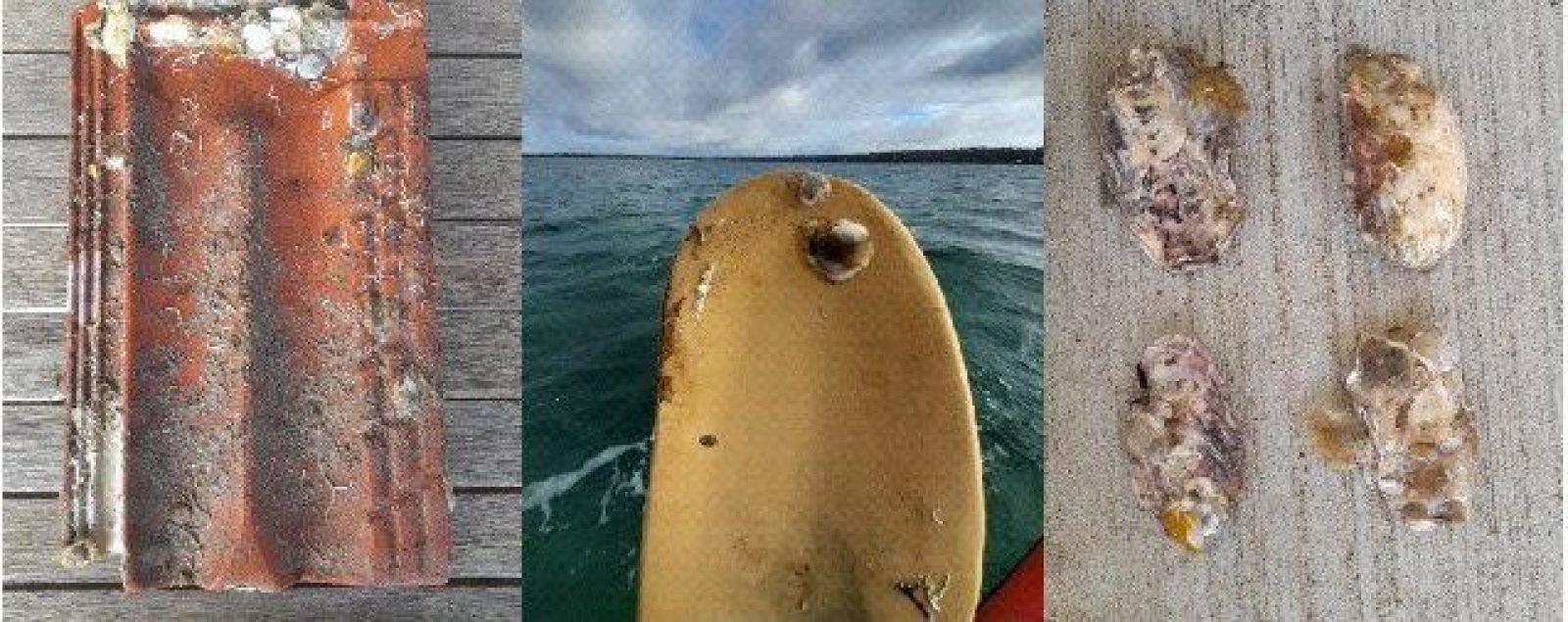Published:
Author:
Native flat oyster reefs were once widespread across southern Australia, including throughout Nepean Bay on Kangaroo Island. These oyster reefs were fished and dredged to near extinction over a century ago, leaving no suitable substrate for native flat oyster larvae to settle on and grow.
These lost reefs once provided crucial habitats for a broad range of temperate coastal marine species, filtered water and improved water clarity and quality, and stabilised sediment and protected shorelines from storm surge wave-energy.
The Kangaroo Island Landscape Board has constructed 20 small, native flat oyster (Ostrea angasi) shellfish reefs close to Kingscote and American River to restore this lost substrate so native oysters can settle and reinstate the benefits of this ecological community. Each reef is approximately 100 m² in size and 3–4 m deep. The reefs have been placed in bare sand close to seagrass and rocky reefs to connect these productive coastal habitats for fish and invertebrates.
The reefs are made of limestone, oyster shells, terracotta tile modules and ceramic razorfish forms, providing a substrate for marine organisms to settle on and grow. Around 200 tonnes of limestone rock was deployed to form the base for the reefs, with other materials placed amongst the rock piles.

Native flat oyster spat has been collected to seed the reefs from the sheltered waters of Nepean Bay, using specially designed collecting modules to provide the young oysters with a preferred and protected place to settle. When large enough to be resistant to predators, the spat were moved and spread over the new reefs to give natural recruitment on the reef structures a boost.

Before the reefs were built, each site was surveyed for fish species assemblages and abundance to create a baseline dataset. Now that the reefs have been constructed, the KI Landscape Board are closely monitoring how well they are growing by surveying native flat oyster densities, growth and survival, and the abundance and diversity of fish using Baited Remote Underwater Video stations (BRUVs). Every year, the results will be compared with the baseline surveys to detect any changes over time.
As of winter 2023, the reefs are approximately 6 months old. Video monitoring shows that the structures are attracting recreational fishing species, particularly King George Whiting, at both reef sites. Diver surveys of the limestone boulders have identified good natural recruitment of native flat oysters at both sites, with settlement of spat highest at Kingscote (with an average density of 128 oysters per m2) and the largest oysters on the American River reef (average of 12 mm at Kingscote and 21 mm at American River). Native flat oysters have settled on all reef substrates including limestone, ceramic razorfish forms and in particularly high densities on terracotta roof tiles.

The KI Landscape Board will continue to monitor the reefs to determine which materials and structures are providing the best habitat for native flat oysters and fish life. This information will be shared to guide future shellfish reef restoration projects here on Kangaroo Island and across Australia. By monitoring the environmental conditions across Nepean Bay we may gain further insights to the trends in settlement, recruitment and growth of native flat oysters on the reefs.
The KI Landscape Board began consulting with the local community about these reefs in 2018. Through community meetings, presentations and consultation with technical and scientific working groups and local industry the KI Landscape Board gathered valuable knowledge of the historical and current state of native flat oysters around Kangaroo Island. This information helped select suitable reef locations and determine where to collect oyster spat. Local industry organisation KI Shellfish based in American River have been closely involved throughout the project, collecting spent oyster shell for the project, and deploying the terracotta tile modules to the reef. Ceramic and terracotta tile ‘razorfish forms’ were recreated by ceramicist Jane Bamford and the Kingscote Men’s Shed respectively to mimic the real razorfish that are found in Nepean Bay.
This project was supported by the Kangaroo Island Landscape Board, through funding from the Australian Government’s National Landcare Program: Fisheries Habitat Restoration Program.



